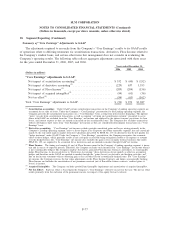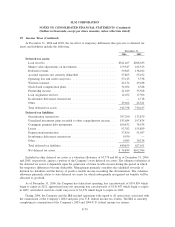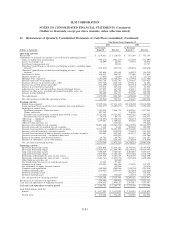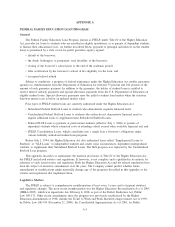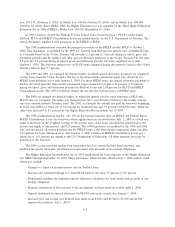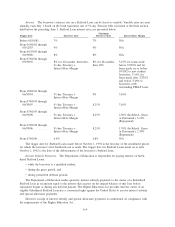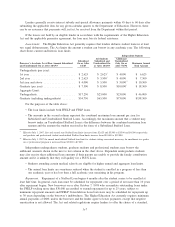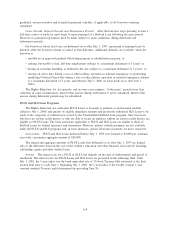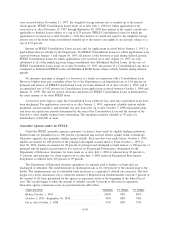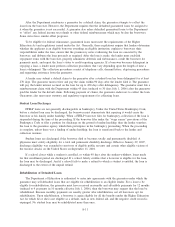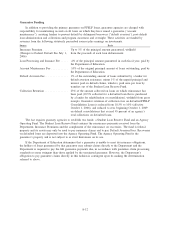Sallie Mae 2006 Annual Report Download - page 206
Download and view the complete annual report
Please find page 206 of the 2006 Sallie Mae annual report below. You can navigate through the pages in the report by either clicking on the pages listed below, or by using the keyword search tool below to find specific information within the annual report.• Increases graduate and professional student unsubsidized Stafford loan limits from $10,000 to $12,000
(effective July 1, 2007).
• Authorizes graduate and professional students to borrow PLUS loans.
• Reduces insurance from 98 percent to 97 percent for new loans beginning July 1, 2006.
• Phases out the Stafford loan origination fee by 2010.
• Reduces insurance for Exceptional Performers from 100 percent to 99 percent.
• Repeals in-school consolidation, spousal consolidation, reconsolidation, and aligns loan consolidation
terms in the FFELP and FDLP.
• Mandates the deposit of a one percent federal default fee into a guaranty agency’s Federal Fund, which
may be deducted from loan proceeds.
• Repeals the guaranty agency Account Maintenance Fee cap (effective FY 2007).
• Reduces guarantor retention of collection fees on defaulted FFELP Consolidation Loans from 18.5 per-
cent to 10 percent (effective October 1, 2006).
• Provides a discharge for loans that are falsely certified as a result of identity theft.
• Provides 100 percent insurance on ineligible loans due to false or erroneous information on loans made
on or after July 1, 2006.
• Allows for a 3-year military deferment for a borrower’s loans made on or after July 1, 2001.
• Reduces the monthly payment remittance needed to rehabilitate defaulted loans from 12 to 9.
• Increases from 10 percent to 15 percent the amount of disposable pay a guaranty agency may garnish
without borrower consent.
• Streamlines mandatory forbearances to accommodate verbal requests.
The changes made by THEEA include:
• Restrictions on the use of eligible lender trustees by schools that make FFEL loans;
• New discharge provisions for Title IV loans for the survivors of eligible public servants and certain
other eligible victims of the terrorist attacks on the United States on September 11, 2001; and
• A technical modification to the HEA provision governing account maintenance fees that are paid to
guaranty agencies in the FFEL Program.
Eligible Lenders, Students and Educational Institutions
Lenders eligible to make loans under the FFELP generally include banks, savings and loan associations,
credit unions, pension funds and, under some conditions, schools and guarantors. A student loan may be made
to, or on behalf of, a “qualified student.” A “qualified student” is an individual who
• is a United States citizen, national or permanent resident;
• has been accepted for enrollment or is enrolled and maintaining satisfactory academic progress at a
participating educational institution; and
• is carrying at least one-half of the normal full-time academic workload for the course of study the
student is pursuing.
A student qualifies for a subsidized Stafford loan if his family meets the financial need requirements for
the particular loan program. Only PLUS loan borrowers have to meet credit standards.
A-3


